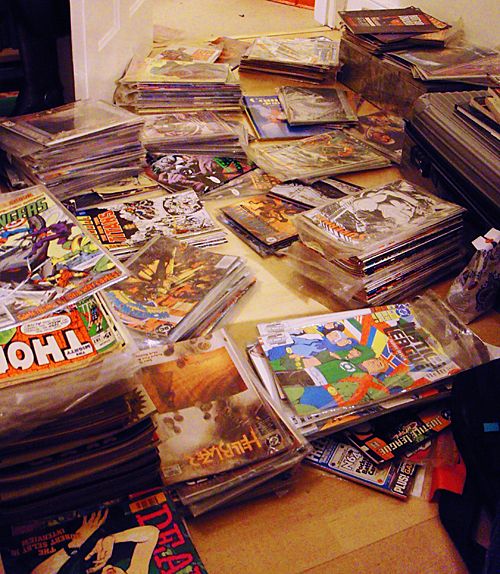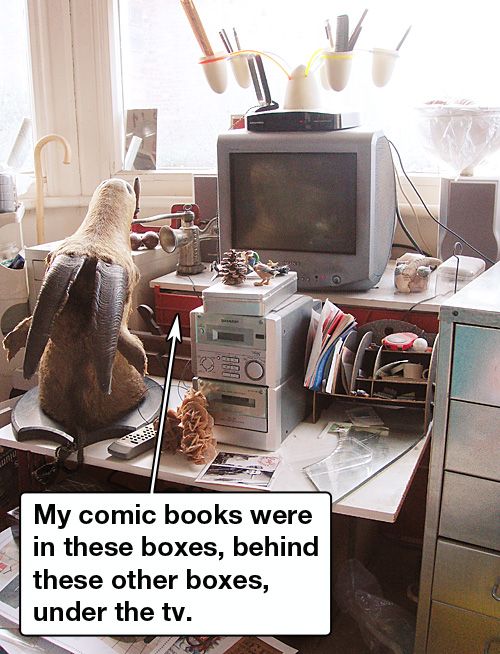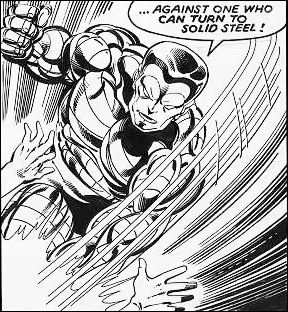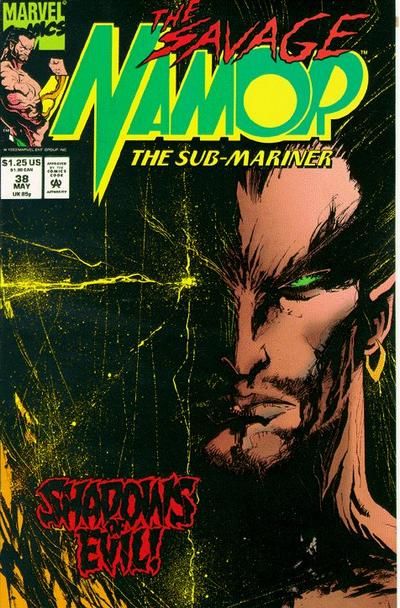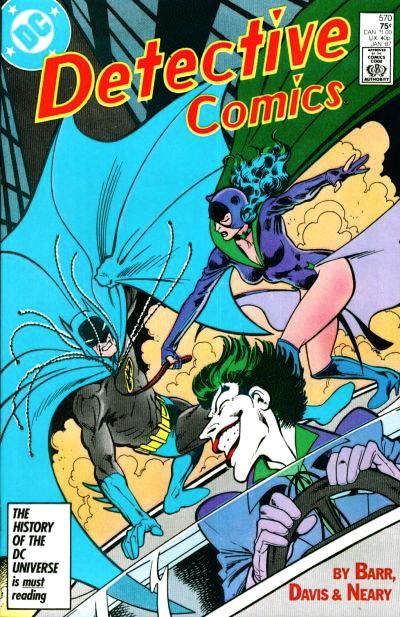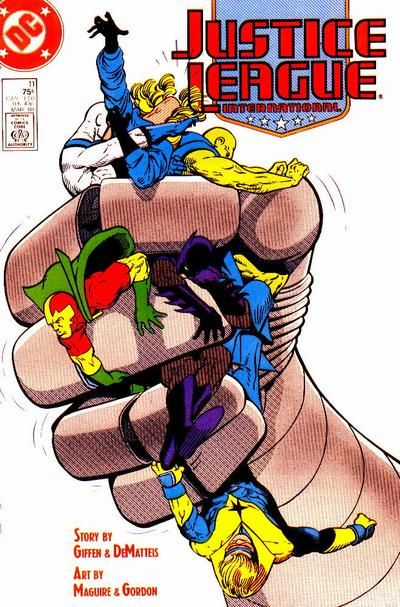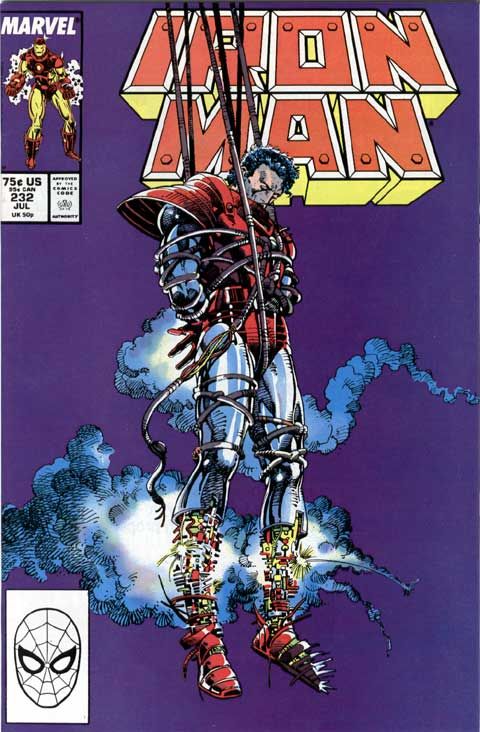Last week, on my last day in London visiting the house I grew up in, I decided to tackle my comic book collection. This is a pretty sparse little pile of boxes, taking up some space in my dad’s office. I really wasn’t sure what state they’d be in, or how I’d be able to find them (my dad’s way of storing things is… interesting to say the least), but I was pretty determined. After a day of moving the things that were in front of and on top of the boxes (it turned out he’d put boards on top of them and made them a table to hold a tv and other assorted detritus), we managed to unearth a rather neat little time capsule spanning my comic book collecting years of 1981-1995.
Over the years, I’ve probably taken most of the trade paperbacks that I owned back to the states with me (the basics that most people own, like Watchmen, Arkham Asylum, the Dark Knight Returns, Ronin, etc), but there weren’t many, because I used to dismiss such an easy solution to collecting; I was a bit of an extremist moron about my collecting.) I really wasn’t sure what was left, and since that 15 year span encompasses 4 years spent living in Holland and Germany (when I bought almost no comic books), I had no idea what goodies I’d have. It turns out there was more to it than I’d suspected.
First of all, there were the oversized, black and white British reprints of the Uncanny X-Men, which are the first comic books that I actually collected (rather than reading and chucking them out, which was what I used to do.) These were the first books that really got me hooked. I read and reread them. I really thought I’d want to bring them back with me, just to show my friends how bloody perfect and beautiful Terry Austin’s inking made John Byrne’s drawings… Without color, slightly larger than usual, the comics really sing. It’s an entirely different animal than the color versions, as I was to discover when they began reprinting them in the Classic X-Men. Looking through them, I remembered my disappointment in the color version, so insipid compared to the intensity and sweep of Byrne and Austin in tandem. No offence to the colorist intended, he did a fine job, it’s just that without color, the graphic nature and rhythm of the drawings popped a lot more. In the end, I elected not to bring them back simply because pretty much everyone has seen those comicbooks already and without bringing back the color versions to compare them to, it seemed a little pointless. Besides, out of all of my comic books, these are the ones that I’ve read most often, so there’s not point in taking them back to the U.S. when there are so many comics that still need to be read.
After those marvelous Uncanny X-Men, I was still deeply hooked on Byrne, and followed him to the Incredible Hulk, the Fantastic Four, Alpha Flight, Namor, Superman, Action Comics, Next Men, and even managed to track down Omac when I was living in Germany. Now I could hardly take that run of X-Men home and not all of those others too. In many ways, it’s all one story since nothing exists out of context and I couldn’t see separating that body of work.
My second great love (and more enduring love) would have to be Sienkiewicz and Claremont’s insanely beautiful New Mutants. Sad to admit it, but those comics are probably to blame for the slew of horribly over-the-top essays I wrote at the time about subterranean monsters with serious needs to wax lyrical about their damn feelings. I feel bad for my English Literature teachers. Of course those lovely looking comic books don’t need to be schlepped back to the U.S. because I’m diligently in the process of collecting them in the current trade paperbacks (a must buy, in my opinion, so get on that people!)
I suppose it’s all around the same time, and so it makes sense that I’d have a massive run of George Perez’ reinvention of Wonder Woman. I was surprised at the sheer volume of the collection, since I don’t remember a thing about it, but it explains why, despite hardly ever reading it now, I’m still a huge Wonder Woman fan. Of course I’d love to sit down and reread those comic books someday, but I didn’t want to bring them home without the preceding Teen Titans books by Perez, which I’d loved so much. So I left them all together for another time.
Despite my infatuation with Batman, I only had three of the six great issues of Detective Comics by Mike W. Barr, Alan Davis, and Paul Neary (#569-#575). I’d thought there would be more, since I have so very many happy memories of that run, but now that I think about it, this was back before I’d discovered specialist comic book shops, and so I was limited to being able to buy whatever was in the local newsagent that week. This discovery has made me desperately want to scour the back issue bins at my next convention for the full run (watch out ECCC.) Sadly, the really huge pile of Davis’ Excalibur that I discovered in my collection didn’t even slightly interest me. It’s a shame because (as with Alpha Flight) I was incredibly excited when it started, but over time it simply hasn’t retained any interest for me.
The series I more actively want to reread, (but again, I’m already buying it in hardcover reprints, and I haven’t even had time to read the first two of those yet) is the Justice League International run by Giffen, DeMatteis, and Maguire. I loved those when they were coming out, not only because the art and writing was fantastic, but because of the way the team interacted together. It was clearly a team with a lot of friction, but not drama-filled, erupting, confrontational friction like the X-Men. This was a lot more like my own everyday teenage life, filled with people who approached problems really differently, and had to deal with the inevitable disagreements that ensued. At the end of the day, I think this is why I still retain such a soft spot for the Martian Manhunter; He was always the one who bridged the gap between a deathly serious Batman, a ridiculous Booster Gold, an incredibly arrogant Guy Gardner, and all the other exasperated team mates.
Looking through the odd, single-issues of superhero comicbooks that I'd picked up over the years, I found that I could remember a lot of the covers far better than I remember the interiors. This is probably because the covers are about 90% of what made me buy the comic books back then. So when I caught site of a single issue of Iron Man, with a Barry Windsor-Smith drawing of our hero, hanging unconscious from the cover (#232), I knew exactly why I bought it. Though when I opened it, I was surprised to find a story all about Stark’s inner journey, tortured by his own hallucinations. A far cry from the current Invincible Iron Man storyline, in which Stark is similarly shown to be traveling through his own internal psyche, but without the rich color palette and wildly energetic artwork of Windsor-Smith to convey the urgency and fear of this journey. Despite all of the advances in printing techniques and quality nowadays, to my mind this nearly 20 year old issue of Iron Man conveyed more in a single issue than what has currently taken 3-5 issues. I’m not sure why this is, and perhaps it’s just a case of my own visual taste being more in alignment with Windsor-Smith in this instance, but I’d like to see a little more of this kind of urgency applied to current comic books. Ironically, even now my purchase is predominantly motivated by the cover, but this time not the art, but the design. While I was already enjoying Invincible Iron Man, it was Rian Hughes streamlined new take on the design of the cover that has kept me going through this coma-induced/ing storyline of a vegetable's inner monologue.
At this point, my old comic book collection took a dramatic turn out of the realm of my beloved superheroes, and into the arena of the strange and unknown... More about that next week, when I finish delving into the comic book collection of my childhood.


